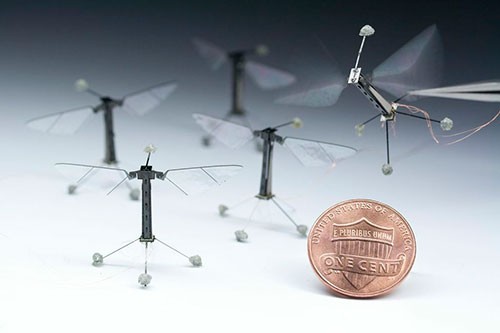Harvard University researchers are continuing work on autonomic robotic insects, says the university in a statement.
Researchers at the Harvard School of Engineering and Applied Sciences (SEAS) and the Wyss Institute for Biologically Inspired Engineering at Harvard, are currently working on dozens of tests, including control maneuvers and landing. The next steps, they say, will involve integrating the parallel work of different research teams that are working on the brain, colony coordination behavior, the power source, and so on, until the robotic insects are fully autonomous and wireless.
The robotic insect is Inspired by the biology of a fly, with sub-millimeter-scale anatomy and two wafer-thin wings that flap almost invisibly, 120 times per second.
The tiny robot flaps its wings with piezoelectric actuators, strips of ceramic that expand and contract when an electric field is applied. It has thin hinges of plastic embedded within the carbon fiber body frame, serving as joints. A control system commands the rotational motions, with each wing controlled independently in real time.
Applications of the RoboBees project could include distributed environmental monitoring, search-and-rescue operations, or assistance with crop pollination.
The first flight took place last summer in a Harvard robotics laboratory. Researchers have now demonstrated the first controlled flight. You can watch a video of the flight here.
This research was supported by the National Science Foundation and the Wyss Institute for Biologically Inspired Engineering at Harvard.
We carried a story on how the robots were being made. You may find this interesting, as well: Use Big Robots To Build Tiny Robots, Suggests Harvard Engineers
[Image courtesy: Harvard University]


